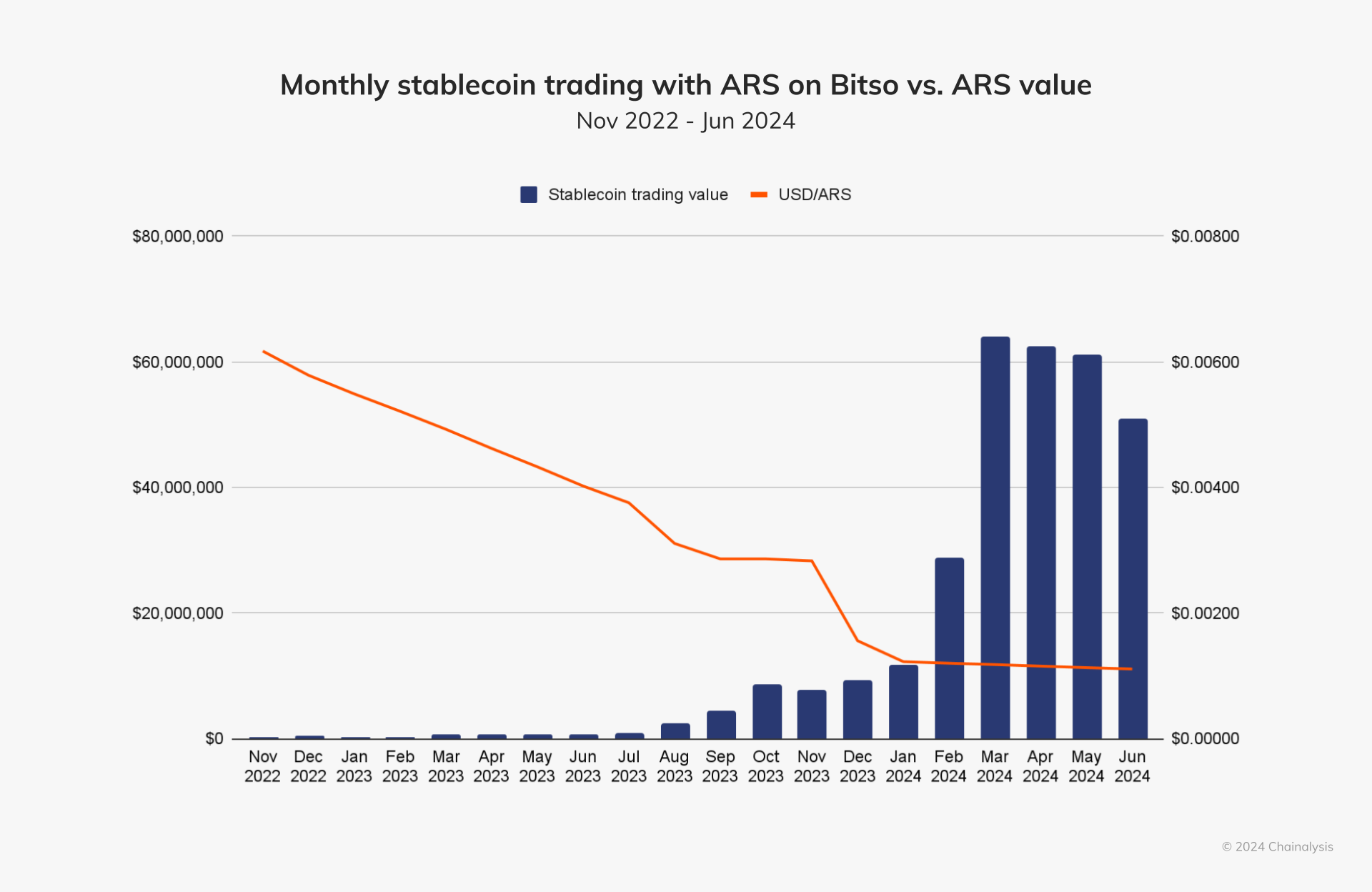-
Stablecoins are revolutionizing financial practices in emerging markets, especially in regions plagued by high inflation and economic instability.
-
Countries in Latin America and Africa are leading the charge in stablecoin adoption, facilitated by evolving fintech ecosystems and increasing access to digital finance.
-
Citing a recent report, Kash Razzaghi, Circle’s chief business officer, noted, “The introduction of stablecoins in these markets reflects significant demand for financial stability among populations facing currency devaluation.”
Explore how stablecoins empower emerging market economies, providing financial stability and accessibility amid high inflation and economic challenges.
The Role of Stablecoins in Local Economies
Stablecoins are not just digital assets but transformative financial tools for various stakeholders, including financial institutions, businesses, and individual users. They streamline processes such as international payments and provide liquidity management solutions to mitigate the adverse effects of currency fluctuations.
Kash Razzaghi highlights this trend: “In emerging markets, the regulatory environment for cryptocurrencies and stablecoins is evolving.” Such adaptations are crucial for supporting widespread stablecoin use, paving the way for dynamic financial ecosystems.
Decentralized Finance (DeFi) Growth in Africa
As the DeFi landscape evolves, it has integrated stablecoins into its infrastructure, enabling accessible financial services in African nations, particularly Nigeria. This country has emerged as a leading player, registering over $30 billion in transactions through DeFi protocols last year, as noted in a Chainanalysis report.
Razzaghi emphasizes, “As the DeFi ecosystem expands, stablecoin-based lending and remittance solutions cater to users in emerging markets, empowering previously excluded individuals.” This shift not only fosters inclusivity but also enhances participation in the global economy.
Stablecoins in High-Inflation Countries
In Argentina, facing hyperinflation exceeding 100%, residents increasingly rely on dollar-pegged stablecoins such as USDT and USDC. Local trading volumes for these stablecoins spike during currency depreciation events, exemplifying their role as a hedge against inflation.
A 2024 Chainanalysis report revealed that when the Argentinian peso dropped significantly in value, the demand for stablecoins surged dramatically, reflecting a robust trend driven by economic necessity.

Share of LATAM retail-sized transaction volume by asset type vs. Global average. Source: Chainalysis.
In Venezuela, parallel trends emerge where stablecoins serve as a primary means of exchange. The rechargeable bolivar has been abandoned for transactions as users increasingly utilize stablecoins for purchasing goods and everyday services, further illustrating their importance in hyperinflationary environments.
Challenges Facing Stablecoin Adoption
While the potential of stablecoins is significant, several barriers hamper their widespread acceptance, especially in developing countries. Regulatory uncertainties and infrastructural issues pose considerable challenges, while segments of the population continue to encounter limited internet access.
“Stablecoin projects and local communities are proactively engaging in educational initiatives to enhance financial literacy and understanding of digital assets,” Razzaghi noted. Programs like workshops and community outreach are vital in fostering trust and awareness among prospective users.
Stablecoins vs. Central Bank Digital Currencies
The emergence of Central Bank Digital Currencies (CBDCs) introduces new dynamics to the digital currency landscape. CBDCs, being government-backed digital currencies, contrast with privately issued stablecoins. Initiatives from countries like the Bahamas, Jamaica, and Nigeria exhibit substantial interest in CBDC development.

Number of Countries and Currency Unions Exploring CBDC Over Time. Source: Atlantic Council.
Despite potential competition between CBDCs and stablecoins, Razzaghi believes that “USDC and other innovations are already fulfilling many of the functions that CBDCs aim to provide.” Both systems present unique characteristics that could coexist, enhancing digital payment solutions in emerging markets.
Conclusion
As countries strive for financial inclusion and stability, stablecoins serve as a beacon of hope in economies grappling with high inflation and limited access to traditional banking. The growth of stablecoins and associated educational initiatives signals a promising future for global finance, fostering inclusivity and participation in the digital economy.







